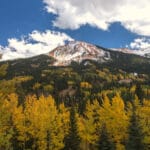Bozeman, Montana, nestled amidst the stunning landscapes of southwest Montana, offers breathtaking views and a vibrant culture. But its location at approximately 4,820 feet (1,470 meters) above sea level is more than just a scenic detail. This elevation, often earning Bozeman the nickname “Mile-High City,” influences everything from the local climate to the types of activities available. This article will explore the various facets of Bozeman’s altitude, its implications for visitors, and its role in shaping the city’s unique identity.
Experiencing Bozeman’s Altitude
Bozeman’s elevation places it within the “moderate altitude” category (generally between 5,000 and 8,000 feet). While not as extreme as some high-altitude locations, it’s still high enough that visitors, especially those arriving from lower elevations, might experience some physiological effects. The thinner air at this elevation contains less oxygen, requiring your body to adjust.
Acclimating to the Altitude
This adjustment process, known as acclimatization, involves physiological changes such as increased red blood cell production. It typically takes a few days, and during this time, some individuals may experience mild symptoms of altitude sickness, including headaches, fatigue, and shortness of breath. Staying well-hydrated, avoiding strenuous activity upon arrival, and listening to your body’s signals can significantly ease the acclimatization process. If symptoms persist or worsen, seeking medical advice is recommended.
Sun, Snow, and Seasonal Altitude Effects
Bozeman’s altitude also plays a crucial role in shaping its distinct climate. Summers are generally mild and dry, providing a welcome escape from the heat found at lower elevations. However, winters bring abundant snowfall, transforming the landscape into a winter wonderland. The thinner atmosphere at higher altitudes also means increased exposure to the sun’s ultraviolet (UV) rays. Sunscreen is essential year-round, even on cloudy days, to protect against sunburn.
Bozeman: A Gateway to Higher Adventures
While Bozeman itself sits at a moderate altitude, it serves as an ideal basecamp for exploring the surrounding mountain ranges, which reach significantly higher elevations. The nearby Bridger, Tobacco Root, and Big Belt Mountains offer peaks soaring well over 9,000 feet, providing thrilling opportunities for hiking, climbing, and backcountry skiing. Acclimatizing in Bozeman can be advantageous for those planning high-altitude adventures in these surrounding areas.
Is Bozeman Considered High Altitude?
The classification of “high altitude” is somewhat subjective, with elevations above 8,000 feet generally considered high altitude, and those between 5,000 and 8,000 considered moderate altitude. Bozeman’s elevation of 4,820 feet places it in this moderate range. While it may not elicit the same level of altitude sickness as locations above 8,000 feet, its elevation is still significant enough to impact some individuals.
Why is Bozeman Famous?
Bozeman’s fame stems from a unique blend of factors:
- Rich History: Founded in 1864 by John M. Bozeman, the city played a key role as a supply point during the gold rush era, with the Bozeman Trail connecting the Oregon Trail to Virginia City’s gold mines. Incorporated in April 1883, this rich history is still palpable today.
- Stunning Scenery: Surrounded by the Bridger, Tobacco Root, Big Belt, and Horseshoe Hills mountain ranges, Bozeman offers breathtaking vistas and unparalleled access to outdoor recreation.
- Vibrant Culture: Home to Montana State University, Bozeman boasts a youthful energy and a thriving arts and culture scene, evident in its museums, galleries, and theaters. The Museum of the Rockies, renowned for its dinosaur collection, is a must-visit.
- Outdoor Paradise: The surrounding mountains and rivers provide a playground for outdoor enthusiasts, offering opportunities for hiking, skiing, fishing, and more.
Bozeman’s appeal extends beyond its proximity to Yellowstone National Park. Embark on an unforgettable Arctic adventure to alaska kaktovik or find tranquility at the serene antero reservoir. Bozeman’s popularity is reflected in its significant growth, and the city continues to evolve while retaining its unique character and connection to the Montana spirit.
What is the Nickname for Bozeman, Montana?
Bozeman is affectionately known as “The Bozone.” This nickname seems to encompass more than just the downtown area, capturing the city’s vibrant energy and unique blend of urban and outdoor lifestyles. The nickname may have a tongue-in-cheek character but reflects local pride and sense of community. Locals commonly use “Bozeman” not “The Bozone.”
Living the High-Altitude Life
Bozeman’s elevation isn’t just a number; it’s integral to the city’s identity. It influences the climate, shapes recreational opportunities, and fosters a strong connection to nature among residents. While growth and development present ongoing challenges, Bozeman strives to balance progress with preserving the natural environment and the small-town charm that makes it so special.
- Unveiling Bernhard Caesar Einstein’s Scientific Achievements: A Legacy in Engineering - July 15, 2025
- Uncover who is Jerry McSorley: CEO, Family Man, Business Success Story - July 15, 2025
- Discover Bernhard Caesar Einstein’s Scientific Contributions: Unveiling a Legacy Beyond Einstein - July 15, 2025















2 thoughts on “Bozeman, MT Elevation: A Guide to Altitude, Lifestyle, and Activities”
Comments are closed.